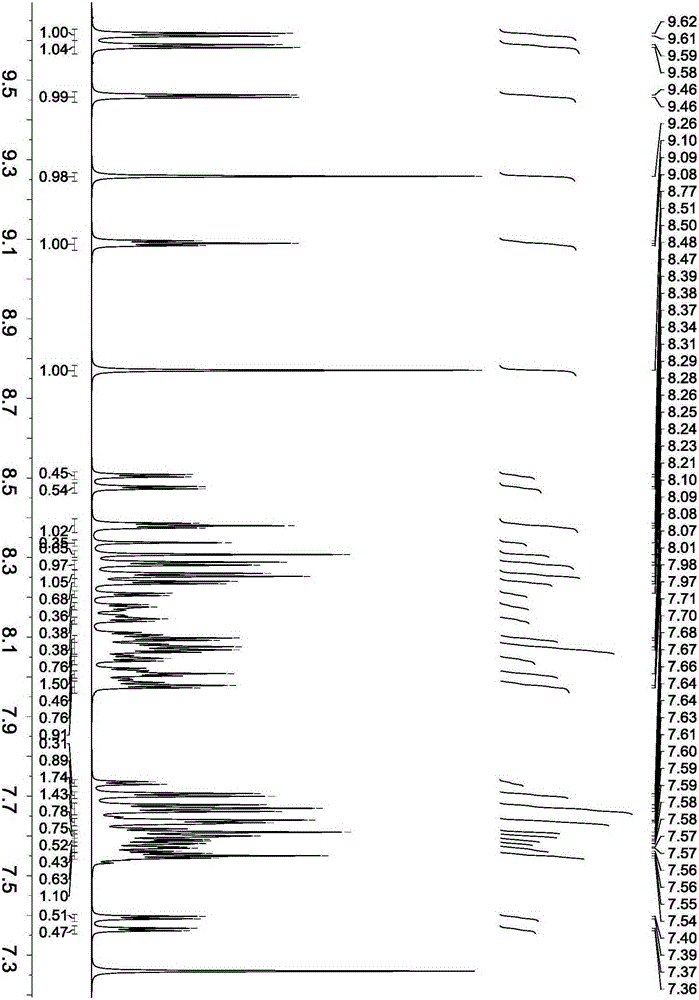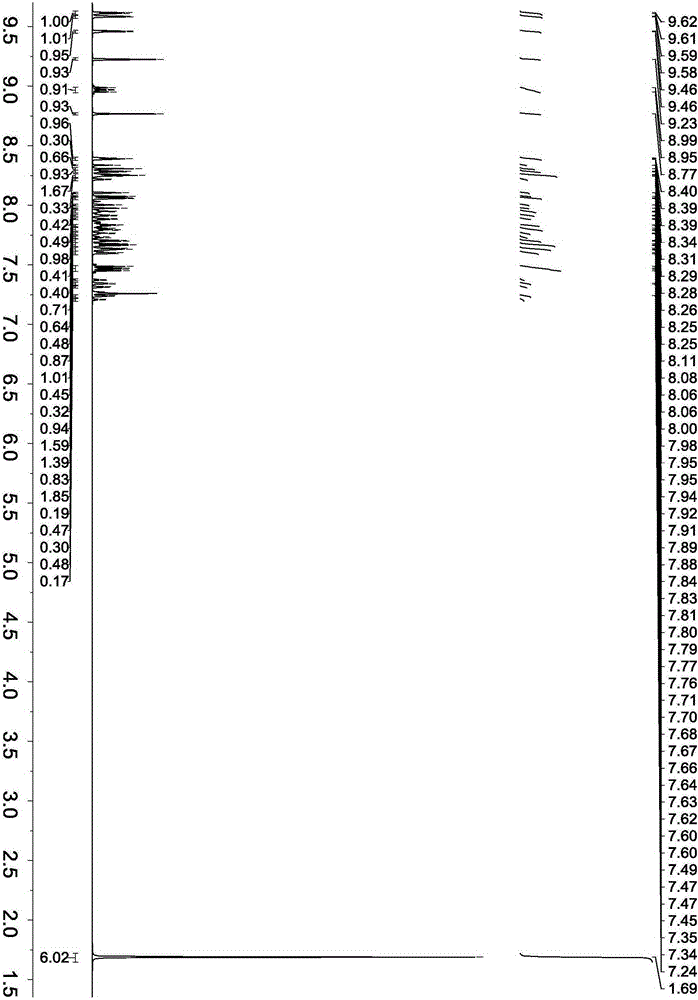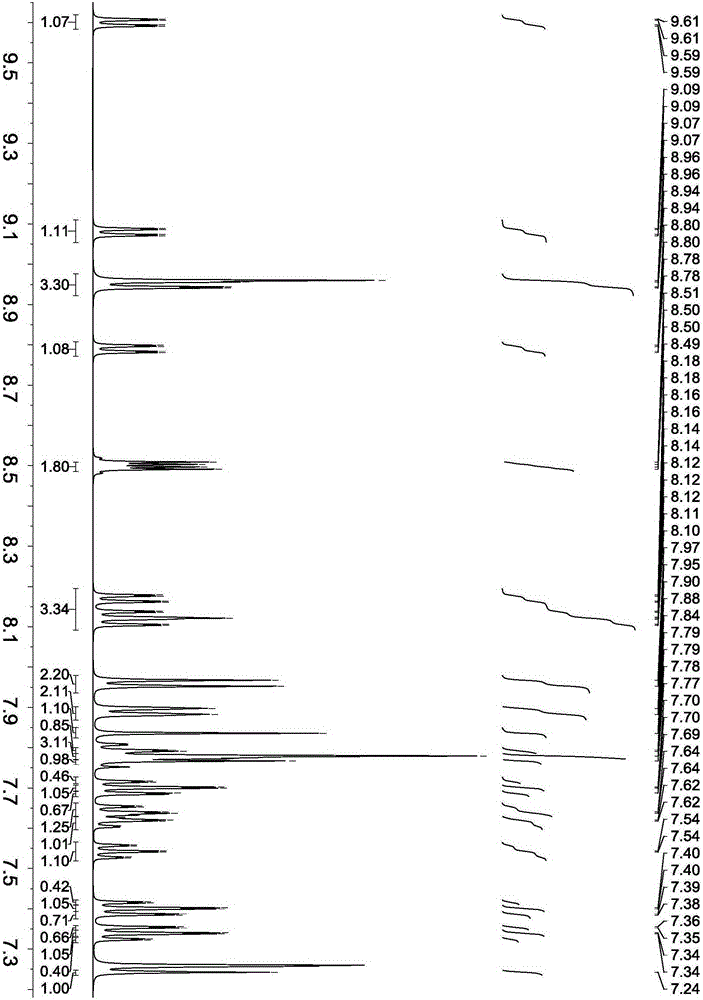Chrysene derivative containing quinazoline group and application thereof
A quinazoline-based and quinazoline-containing technology, which is applied in the field of organic electroluminescence, can solve the problems of reducing the cost of OLEDs, increasing the complexity of the device manufacturing process, and unfavorable problems, and achieves good electron migration ability and good electron acceptance ability. Effect
- Summary
- Abstract
- Description
- Claims
- Application Information
AI Technical Summary
Problems solved by technology
Method used
Image
Examples
Embodiment 1
[0053] The synthesis of various quinazoline derivative intermediates of embodiment 1
[0054] Synthesis of 1,5-bromo-2-aminobenzylamine
[0055]
[0056] Add 5.9 g (molecular weight: 196, 0.030 mol) of 2-amino-5-bromobenzonitrile into a 500 ml three-neck flask, then add 45 ml of anhydrous tetrahydrofuran, stir to dissolve, and cool to 0°C. At 0°C, under nitrogen protection and stirring, 40 ml of borane tetrahydrofuran (concentration 1M) was slowly added to the three-necked flask. Stir at room temperature for three days. Cool to 0°C, add 20ml of absolute ethanol, and blow in dry 1200ml of HCl gas. It was then concentrated, cooled to 25°C, and 30ml of isopropyl ether was added to precipitate the product. Then, under cooling and nitrogen protection, the solid product was added into 50 ml of ammonia water, stirred, extracted with ethyl acetate, and the solvent was evaporated to obtain a solid product, which was dried to obtain 5.4 g, molecular weight 200, yield 89.6%.
[00...
Embodiment 2
[0067] Synthesis of compound shown in formula (5)
[0068]
[0069] 1000 ml bottle with magnetic stirring, add 6.68 g of 6-bromo-2-(naphthalene-2-yl)quinazoline (molecular weight 334, 0.02mol), 12-(naphthalene-2-yl) -6-boronic acid 8.76g (molecular weight 398, 0.022mol), tetrakis ((triphenylphosphine) palladium 1.16g (molecular weight 1154, 0.001mol), 2M sodium carbonate aqueous solution 80ml, toluene 80ml, ethanol 80ml. Argon displacement Afterwards, reflux, monitor reaction with thin-layer chromatography (TLC) method, after 4 hours, TLC finds that raw material bromide reacts completely, has only product point.Cool down, separate organic layer, evaporate to dryness, column chromatography separation, ethyl acetate / petroleum ether After rinsing, 10.6 g of the compound represented by formula (5) was obtained, with a molecular weight of 608 and a yield of 86.7%.
[0070] Product MS (m / e): 608, elemental analysis (C 46 h 28 N 2 ): theoretical value C: 90.76%, H: 4.64%, N: ...
Embodiment 3
[0072] Synthesis of compound shown in formula (6)
[0073] The synthetic steps are the same as in Example 2, except that 6-bromo-2-(naphthalene-2-yl) quinazoline is changed to 6-bromo-2-(naphthalene-1-yl) quinazoline, and other reagents are unchanged, The compound represented by formula (6) was obtained.
[0074] Product MS (m / e): 608, elemental analysis (C 46 h 28 N 2 ): theoretical value C: 90.76%, H: 4.64%, N: 4.60%; measured value C: 90.73%, H: 4.63%, N: 4.64%.
PUM
 Login to View More
Login to View More Abstract
Description
Claims
Application Information
 Login to View More
Login to View More - R&D
- Intellectual Property
- Life Sciences
- Materials
- Tech Scout
- Unparalleled Data Quality
- Higher Quality Content
- 60% Fewer Hallucinations
Browse by: Latest US Patents, China's latest patents, Technical Efficacy Thesaurus, Application Domain, Technology Topic, Popular Technical Reports.
© 2025 PatSnap. All rights reserved.Legal|Privacy policy|Modern Slavery Act Transparency Statement|Sitemap|About US| Contact US: help@patsnap.com



